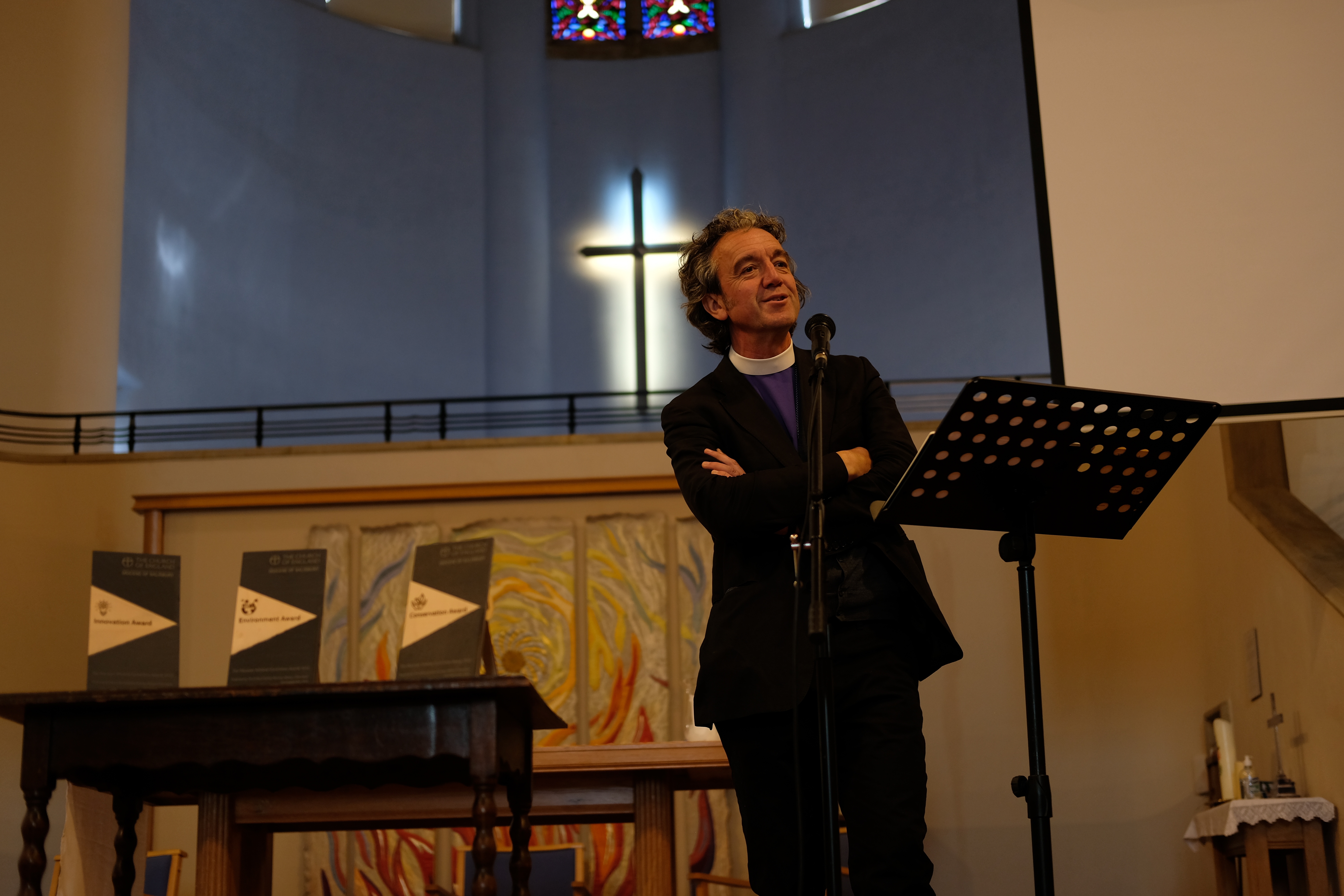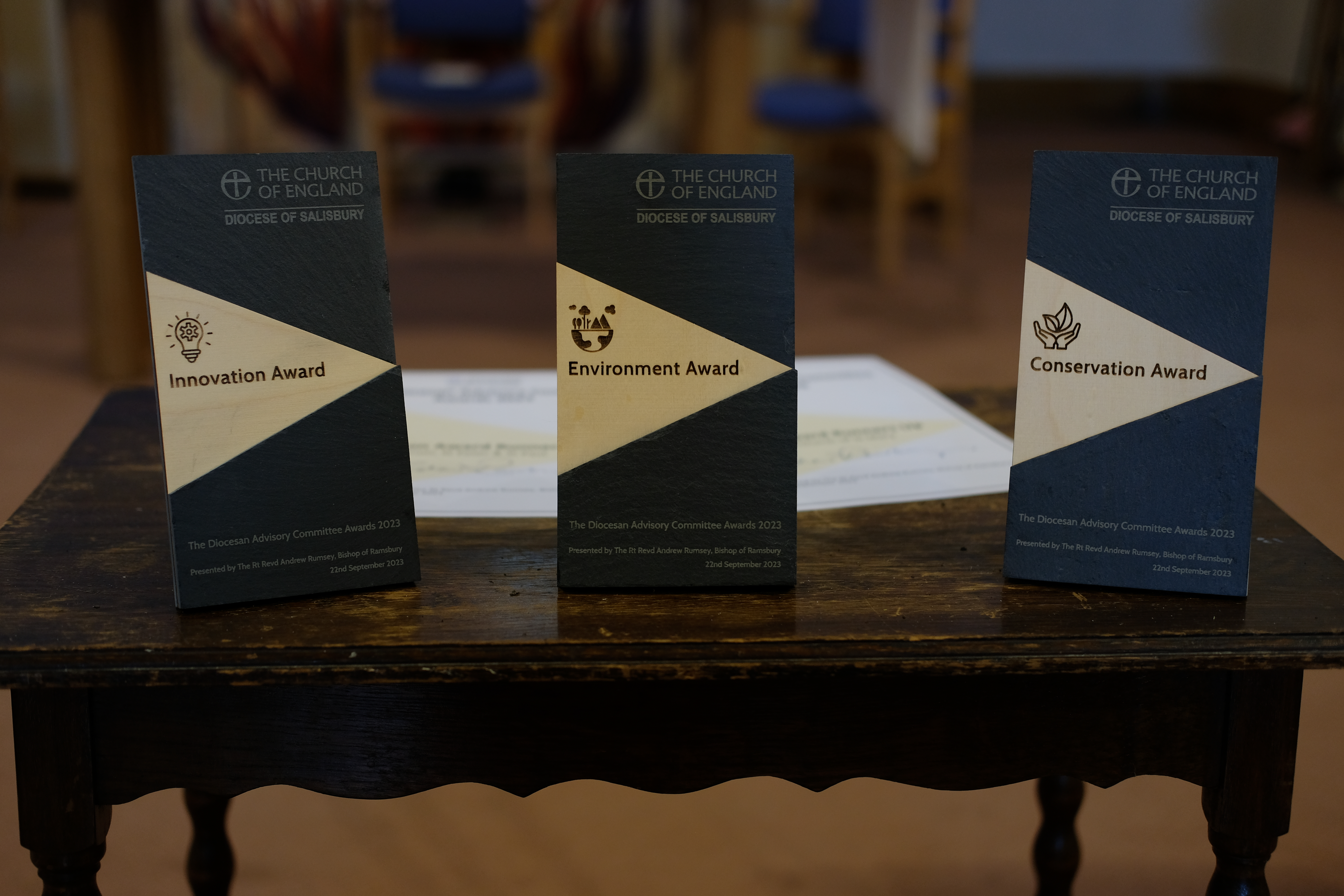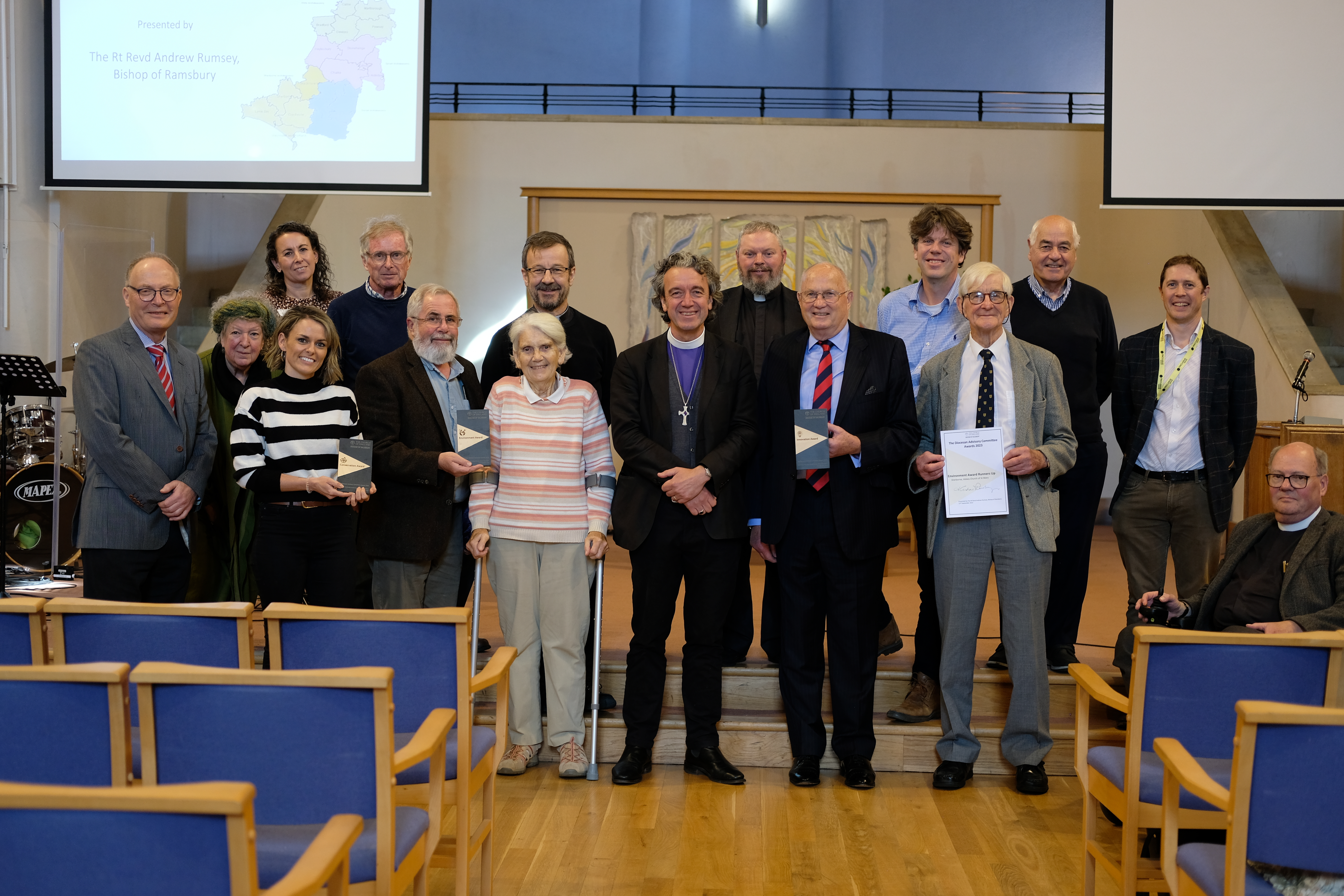On Friday 22 September, members of the DAC (Diocesan Advisory Committee), Architects, Parishioners, and PCC members gathered to celebrate the joy in the completion of renovation projects, whether that be replacing boilers or adding extensions all projects, completed through the approval of the DAC across the diocese.
Hosted by Bishop Andrew, the three categories were Conservation, Innovation and Environment, the awards were held at St Francis’ Church, Salisbury. These projects have been proposed and drafted on a local level. Bishop Andrew stated that church buildings are “not just houses of memories but houses of holiness” and the passion behind how much time and effort had been put into conserving our church buildings was inspirational.

The DAC is an advisory body that exists to guide parishes on the care of church buildings & churchyards and the proposals of work to them. To see how to contact the Church Buildings team (who work with the DAC) see here.

Innovation
Winner: Devizes, St Mary – single storey extension & reordering
This application came to the DAC multiple times during its development and covered both inside and outside of the building. Including a complete reordering of the inside of the church to provide a flexible space. However, to provide the space needed for the PCC's ambitions and community needs, additional space was needed, in the form of an extension.
Improving their green credentials the provision for the Air Source Heat Pump and solar panels were also included.
Conservation
Runner-up: Blandford Forum, St Peter & St Paul – repairs to roof & high-level masonry, internal plasterwork, and insulation
This church had been on the Heritage at Risk Register for several years and was described as being of ‘Immediate risk of further rapid deterioration or loss of fabric’. So, there was much to be thankful for when an application came before the DAC in 2020 for a major scheme of repair.
The application came with many thorough reports on areas such as interior decoration, timber, roofs, and the reredos. Historic England commented that the scheme was thorough, clearly presented and essential in providing a sustainable long-term future.
Winner: Amesbury, St Mary & St Melor – new oak carvings within 15th century nave roof
The DAC wanted to mark the complexity, urgency, and final result of the works undertaken on this building. After a piece of ceiling plaster fell an inspection was carried out and the structure was found to be at severe risk of collapse. To make matters worse it was during the pandemic, 40,000 bees and bats had made their home in the roof and a second roof structure above the existing was discovered. This was no straightforward piece of conservation.
What highlights this application is not only the conservation but, the opportunity taken to introduce new carvings ‘designed by the architect, to depict stories of the church, the wider community and in the case of the NHS rainbow; the challenges of the project’.
At the DAC meeting, the DAC was very impressed with the quality and creativity of the designs proposed to replace the 16 missing paterae and was excited by the combination of traditional and contemporary designs.
Environment
Runner-up: Sherborne Abbey – replacement of gas boiler with air source heat pump
This application was chosen on account of the achievements in actively reducing the carbon footprint of such a large and busy church. The proposals were to install several Air Source Heat pumps to replace an aging boiler, which were connected to an existing underfloor heating system.
Winner: Beaminster, St Mary – installation of solar panels and air source heat pump
Gill (pictured) says that “St. Mary is in positive funds for their heating for the first time in her time at the church, a positive start for the coming winter months.”
St Mary's Beaminster earlier this year implemented wide-reaching changes to their Grade I-listed church building to cut its fossil fuel reliance. The church was awarded an Eco Church Gold award. They wanted to do more.
The team involved managed to bring in renewably powered and effective heating, through the use of solar panels and an Air Source Heat Pump, all suited to the needs of the parish, all whilst maintaining respect for the medieval fabric. The project faced extensive practical limitations and given the extent of the carbon emissions before the installation, the result of this work can be considered a success. The work of the PCC at Beaminster, St Mary has been recognised not just locally but nationally. It featured as an SPAB ‘Building of the Month’ and is a flagship example on the Church Buildings Council website.
Congratulations to all those involved and we look forward to seeing what projects will be nominated next year!

See here for images of the drafted plans and parts of the final results of the DAC Awards!


